Crow’s Nest: Stream Restoration Project Completed
By Daniel Barringer, Preserve Manager.
We finished seeding and unrolling erosion control mats today following the regrading of the terrain where our pond used to be. The pond dam blew out in a storm in June 2018 and we’ve been wanting to replace it with a stabilized, free flowing stream ever since. The project was funded by the Natural Resource Conservation Service and we’re thrilled with how it has turned out.
First: a few historic photos. Here’s the pond in December, 2001. I had stopped mowing the turf right up to the pond a few years before but not enough time had passed for trees and shrubs to become established in the foreground.
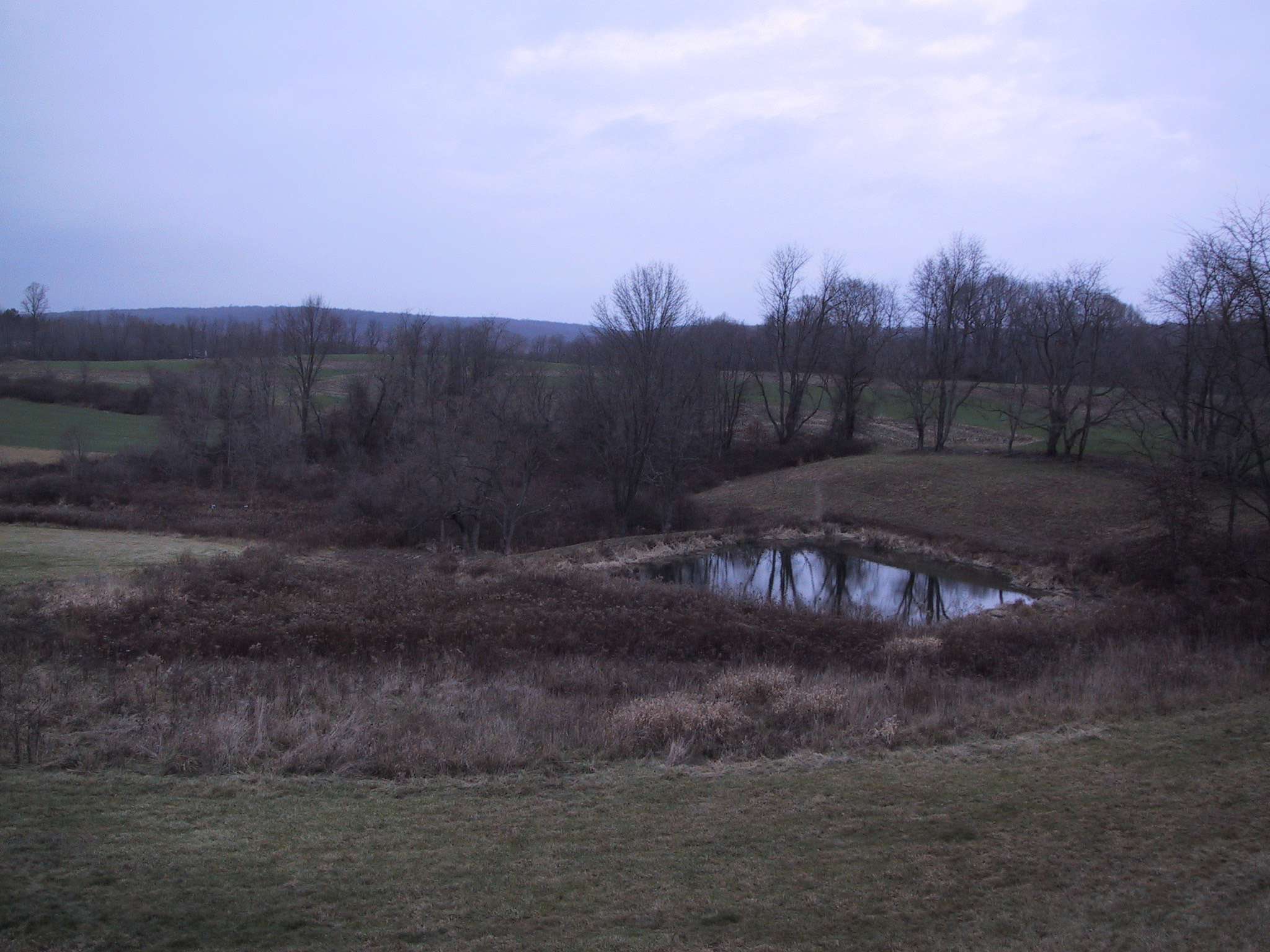
In July of 2002 the pond looked like this, standing on the pond dam and looking back at the barn.
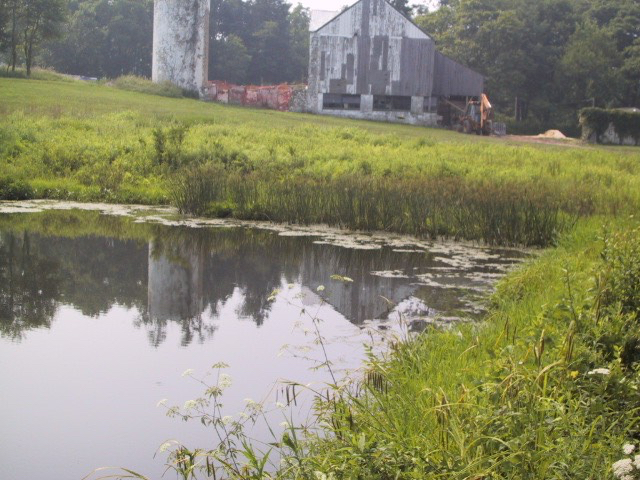
This aerial photo by Steve Eisenhauer from the same era shows the pond on the right with the Jacob house and barn in the center. Farm ponds like this were originally contracted to provide water for livestock or for firefighting.
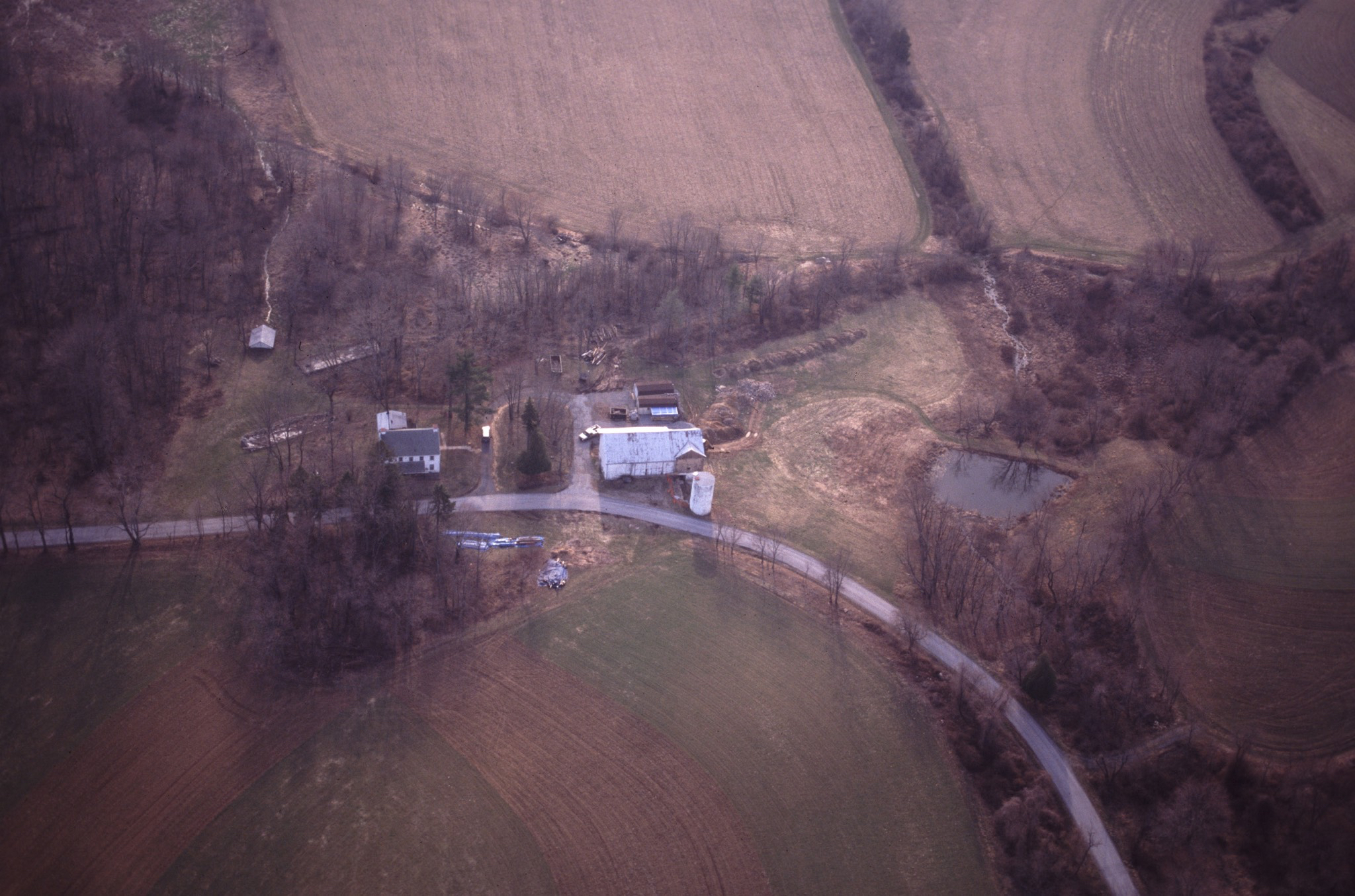
Finally, here’s an oldie: Summer intern Dave Shuman and I were able to take kids around the pond in my 8′ rowboats in July, 2000. The water was only inches deep, but you had to be careful, the muck underneath might have been another foot or more deep!
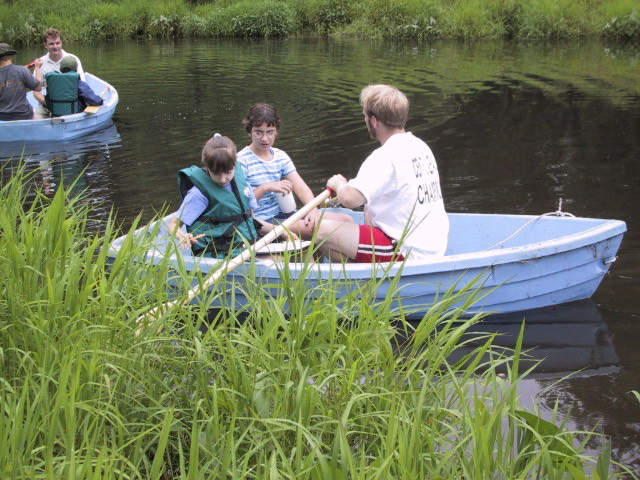
Then in June, 2018, heavy rains blew out the center of the pond dam, which had been leaking around the drainage pipe for some time. This is what that looked like immediately afterward:

Below, Owen points to the recent failure of the dam. For a while we were able to use planks to get across the chasm, until it eroded further and the gap widened. We knew we wanted to do a full restoration of a naturally-meandering stream.
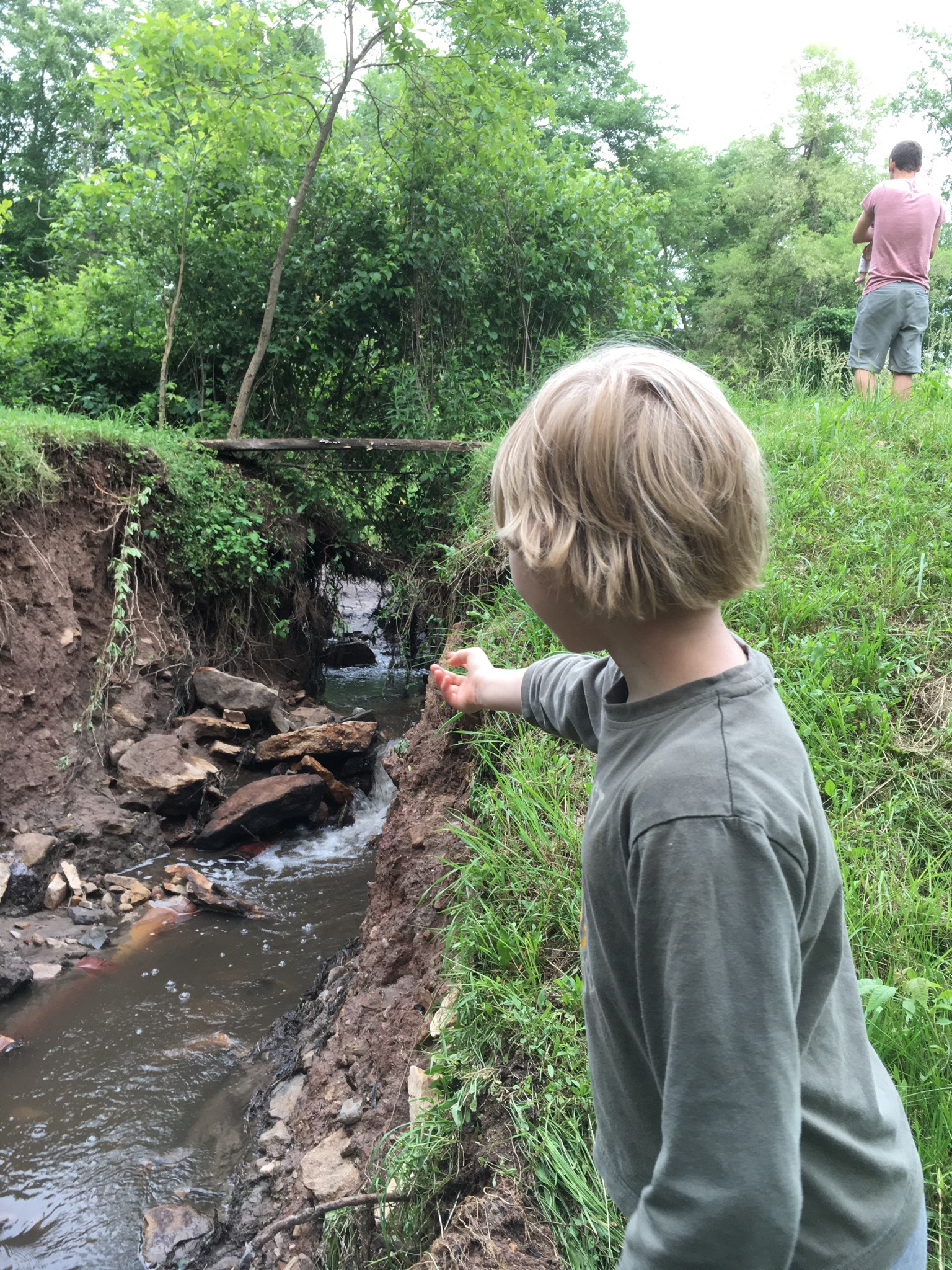
More recently, you may have seen a drone photo of this area this past autumn by volunteer Mark Williams here. Mark will be back to document the changes from this project and subsequent regrowth.
NRCS performed the engineering and paid for the bulk of the work, for which we are so grateful. On our staff David Steckel did the grant writing and Gary Gimbert oversaw the contract. Excavation contractor Phil Hill pulled the banks back and removed the earthen dam to the engineer’s specification. He did a beautiful job leaving only minor raking for us to do to prepare the ground for seeding with native riparian wildflowers. The banks of the stream are armored with stone and the stream descends across the valley over boulders, making a pleasant sound (and allowing the stream to drop the depth of the pond—the height of the dam—without eroding downward).

Alec and I prepped the seed bed yesterday. Today we had a lot of help. Aubrey Smith, Erin Smith, Emma Schad, and Alec and I sowed the wildflower seed and a cover crop of grain rye. Then we lightly raked in the seed.

Most of the rest of the job was spreading erosion control mats which will aid in germination and keep the soil in place until the plants become established. There are places in these mudflats where you can lose a boot.

Here are several shots of the finished work. Although this is by no means the largest restoration Natural Lands has undertaken, it is the largest one we’ve done at our Crow’s Nest Preserve.



We finished the day by live-staking redoiser dogwood (Cornus sericea) at strategic places along the bank.

We can’t wait for the plants to grow and fill in this area. Soon this will be a stream meandering down through a valley of wetland plants and someday we will reopen the trail that used to cross the pond dam and perhaps span the stream on a graceful footbridge. Pay attention to this space, we’ll provide updates throughout the growing season!
Today’s work was the final step in years’ of preparation and behind-the-scenes planning—many people sweating the small stuff, and waiting for ideal weather to do earthmoving. I don’t want the great feeling of the project being complete to overshadow all the work that has led up to this day. Thank you all who made this possible!
